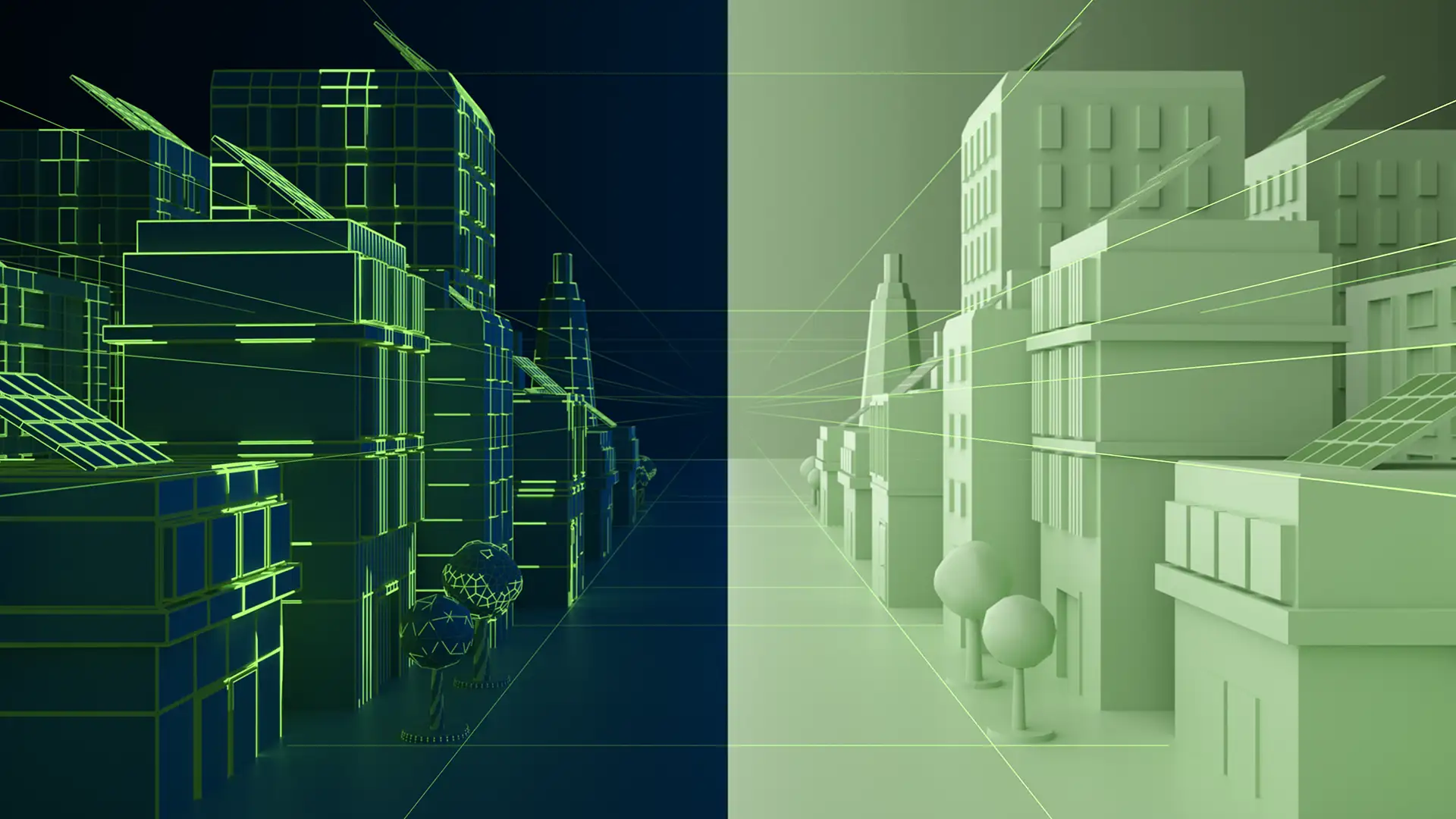With its Green Deal, the EU aims to become the world’s first climate-neutral continent by 2050. Urban areas and especially buildings play an important role in achieving this aim. Buildings account for 40% of all final energy consumption and produce about 35% of all greenhouse gas emissions. On top of that, the energy efficiency of buildings is vital to the transformation of the EU’s energy sector as buildings begin producing energy, not only consuming it. Increasing integration of power from multiple renewable sources poses challenges to power grids. Beyond the construction of new smart infrastructures and the retrofitting of existing buildings to make them “smarter” and more energy efficient, the next step is to connect these smart buildings to the smart grid for greater sustainability.
Getting smart
Sounds promising, right? Well, the European Commission has flagged the lack of digitalisation in the construction industry as one of the main causes of its poor progress in energy efficiency & smart technology solutions. They contend that using Building Information Modelling (BIM) and digital twins – technologies that simulate complex ecosystems to help architects and urban planners to anticipate any eventualities when designing buildings or streets, and to allow building operators to better manage the building’s assets – is essential to tackle challenges faced by the construction industry, such as manpower shortages, resource and energy efficiency, and productivity. Such simulations of real-life environments provide real-time understanding of how that building, or ecosystem is performing – enabling immediate adjustment to optimise efficiency and to provide data to improve the design of future buildings, making them more sustainable. This has prompted numerous initiatives and policies to promote the digitalisation of the sector, including Renovation Wave (2020) and Energy Performance of Buildings Directive (EPBD), Circular Economy Action Plan (2020), Digital Europe Programme, and Horizon Europe.
Even though BIM is the most widely used digital technology in the construction sector, its market adoption is still quite low. A significant factor for this is the proprietary nature of most of these software applications, making data exchange between systems difficult and preventing wide-scale adoption.
BIM in Europe
In Europe, various digital twins have been created, such as the Amsterdam City Dashboard, the Helsinki Energy and Climate Atlas, the Rotterdam Digital Twin, and the Flanders DUET Digital Twin. And in Berlin, Siemens is using digital twins to transform the historical Siemensstadt district in Berlin into the smart and sustainable Siemensstadt 2.0.
As this list of projects attests, interest in using this modelling technology is rising – even more in the context of a growing wave of digitally progressive, smart cities. However, as often occurs with emerging technology, there are currently no joint technical standards across the European Union for digital twins and BIM software. This absence is causing projects like these to be developed based on different proprietary software – ultimately risking issues with interoperability and making it less attractive for SMEs to invest in BIM.
Such problems are a missed opportunity, as architects, builders, planners and building operators cannot easily share ideas and learn from one another. Currently, only Austria, Italy and the Netherlands are mandating Open BIM standards.
Regulation to bring these together
If the building sector is to provide energy savings needed to reach the green deal’s goals, it is essential that building data should be accessible during all phases of the building’s lifecycle. During the design and build phases it would allow for optimised design, selection of smart materials, efficient coordination of disciplines, ensuring faster build times at lower costs while reducing its ecological footprint. Data from these phases, such as the building’s ‘as built’ drawings, the building assets together with their maintenance requirements and operating manuals, need to be available for operations and maintenance phases of a building. This would enhance the users’ comfort, convenience and safety and improve operators’ efficiency (operational, maintenance).
To ensure a Single Market approach that addresses this issue, a common digital framework would need to be adopted, preferably the ISO 19650 standard. However, we believe that this should consider the entire lifecycle of a building, including the supply chain, the building operation and eventually the dismantling of the building. As part of that, the EU wide mandatory use of a BIM-based digital twin would be an obvious approach to meet some of the EU Green Deal goals for buildings, such as energy efficiency and the circular economy.
Beyond the creation of a digital framework, something else will be required: political action. To achieve data-driven efficiencies and capitalise on the EU’s growing expertise in this area, a BIM mandate for all public EU tenders for both new buildings and renovations would actively promote a better way to build and operate. Putting such conditions in place would involve:
- applying the principle of most economically advantageous tenders (MEAT) to buildings;
- making simulation testing and data sharing mandatory in construction and renovation handover processes: design, commissioning, operation, and dismantling;
- drafting new European building standards that include BIM.

The European Commission is already planning to pilot and rollout digital twins as part of the Digital Europe Programme and wants to tie it to the New European Bauhaus concept. This is the window of opportunity to finally integrate BIM and digital twins into the process, at a moment when the technology is ripe for widespread rollout.
We are convinced that addressing these important issues together with other elements like EU-wide standards for reuse of materials in buildings or enhancing the overall energy efficiency of buildings, would strengthen the EU’s competitiveness and productivity; but more importantly it would stimulate a stronger, more sustainable building market and help create sustainable urban areas.
Even though BIM is the most widely used, its market adoption is still quite low. A significant factor for this is the proprietary nature of most of these software applications.
If the building sector is to provide energy savings needed to reach the green deal’s goals, it is essential that building data should be accessible during all phases of the building’s lifecycle.

